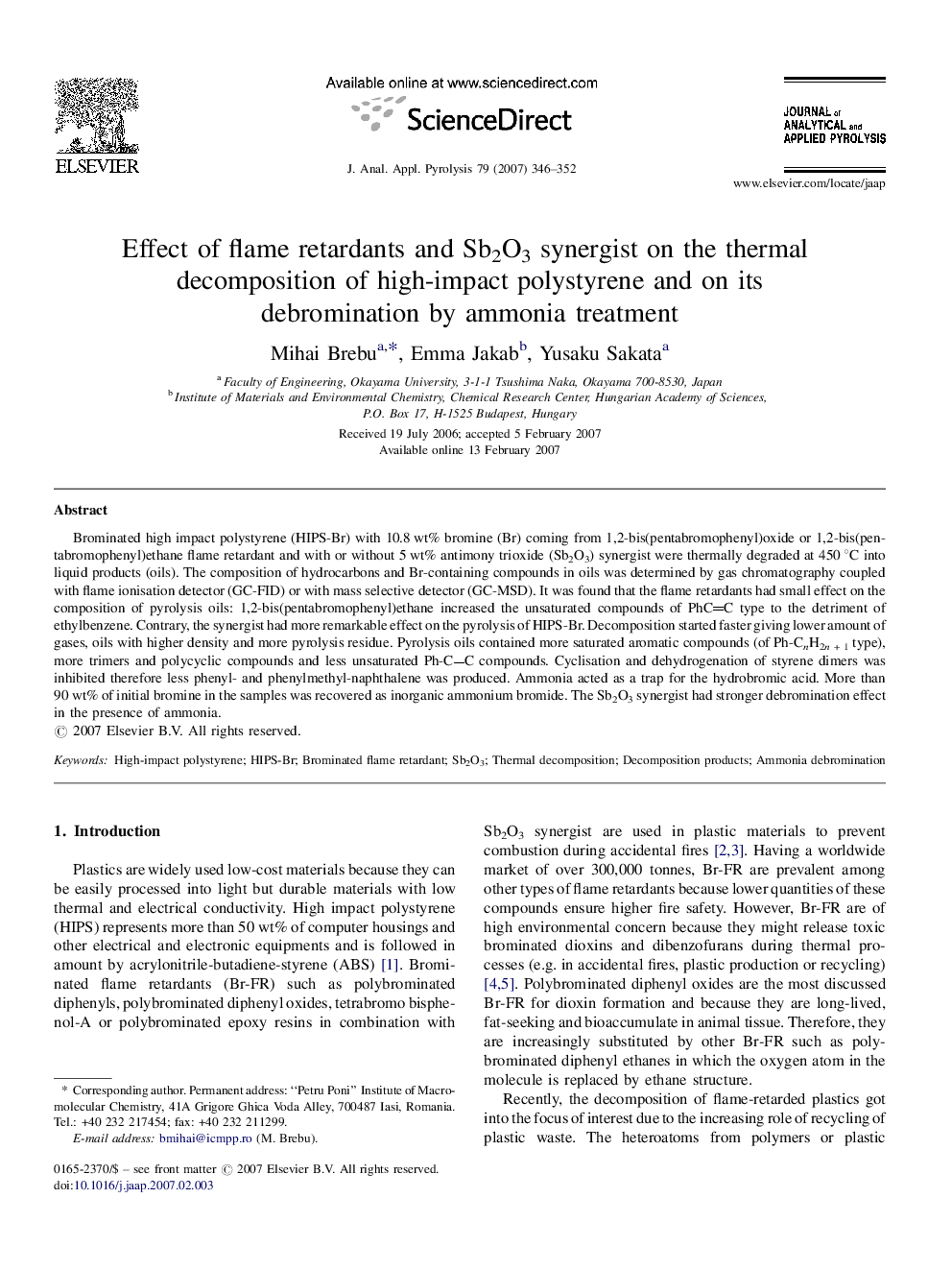| Article ID | Journal | Published Year | Pages | File Type |
|---|---|---|---|---|
| 1197967 | Journal of Analytical and Applied Pyrolysis | 2007 | 7 Pages |
Brominated high impact polystyrene (HIPS-Br) with 10.8 wt% bromine (Br) coming from 1,2-bis(pentabromophenyl)oxide or 1,2-bis(pentabromophenyl)ethane flame retardant and with or without 5 wt% antimony trioxide (Sb2O3) synergist were thermally degraded at 450 °C into liquid products (oils). The composition of hydrocarbons and Br-containing compounds in oils was determined by gas chromatography coupled with flame ionisation detector (GC-FID) or with mass selective detector (GC-MSD). It was found that the flame retardants had small effect on the composition of pyrolysis oils: 1,2-bis(pentabromophenyl)ethane increased the unsaturated compounds of PhCC type to the detriment of ethylbenzene. Contrary, the synergist had more remarkable effect on the pyrolysis of HIPS-Br. Decomposition started faster giving lower amount of gases, oils with higher density and more pyrolysis residue. Pyrolysis oils contained more saturated aromatic compounds (of Ph-CnH2n + 1 type), more trimers and polycyclic compounds and less unsaturated Ph-CC compounds. Cyclisation and dehydrogenation of styrene dimers was inhibited therefore less phenyl- and phenylmethyl-naphthalene was produced. Ammonia acted as a trap for the hydrobromic acid. More than 90 wt% of initial bromine in the samples was recovered as inorganic ammonium bromide. The Sb2O3 synergist had stronger debromination effect in the presence of ammonia.
